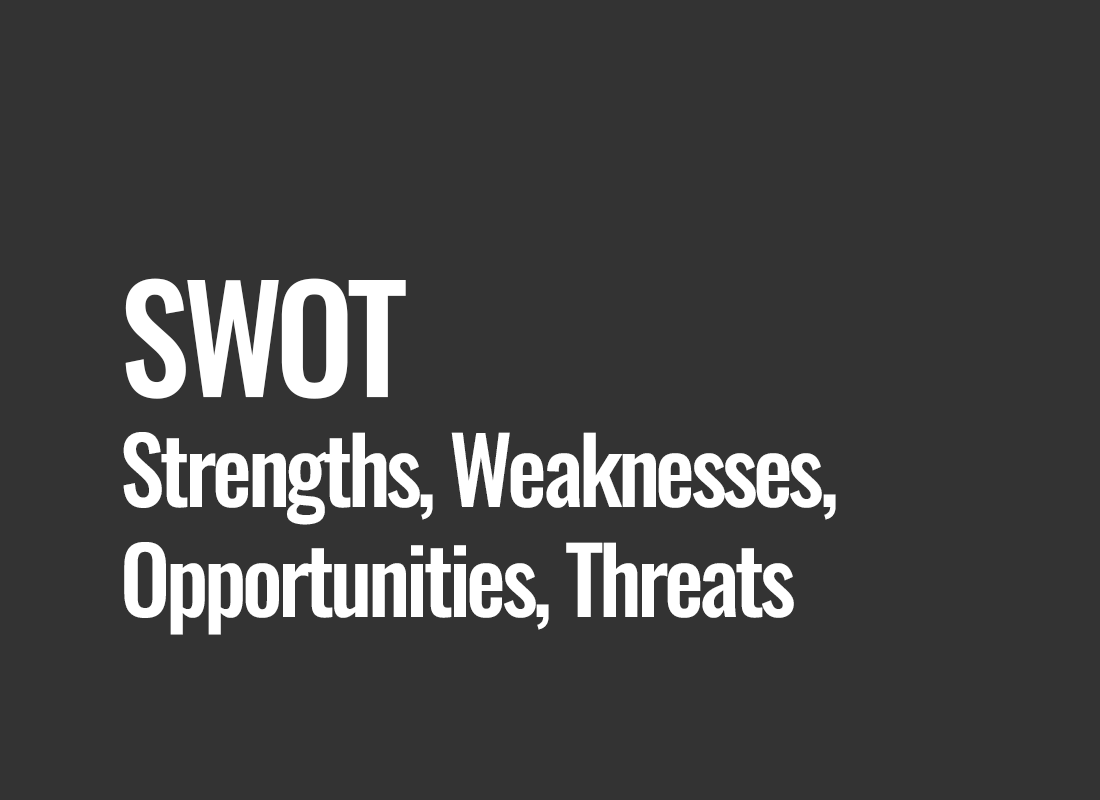SWOT (Strengths, Weaknesses, Opportunities, Threats)
SWOT, which stands for Strengths, Weaknesses, Opportunities, and Threats, is a strategic analysis tool used in various business areas, including UX, e-commerce, marketing, and IT. It is an acronym for the English words describing four key aspects that are essential for effective planning and management. SWOT enables a detailed assessment of the business, product, or project environment, helping to identify both positive and negative aspects that may impact goal achievement.
This tool is extremely valuable in the decision-making process, providing a better understanding of internal and external factors influencing an organization. In areas such as UX, e-commerce, marketing, business, and IT, SWOT analysis becomes a crucial element of strategy, leading to more effective user experience design, e-commerce management, marketing campaign creation, and technological development planning.
SWOT Analysis in Practice
SWOT analysis is an incredibly versatile tool applicable in the fields of UX, e-commerce, marketing, business, and IT. Below, we will explain how this tool can be effectively implemented to identify significant elements in each of these domains.
UX (User Experience)
In the UX domain, SWOT analysis can be used to identify the strengths and weaknesses of the user interface, as well as opportunities and threats related to user experience. For example, intuitive navigation could be a strength, while a complicated purchasing process could be a weakness. The opportunity might be the growing demand for mobile experiences, and a threat could be competition offering more attractive interfaces. Utilizing SWOT analysis allows for pinpointing areas for improvement, resulting in better alignment of products or services with user expectations.
E-commerce
In e-commerce, SWOT becomes a key tool in planning online sales strategies. Strengths may stem from a strong brand and an efficient logistics system, while weaknesses could result from limited visibility in search engine results. An opportunity may be the growing trend of online shopping, and a threat could be competition with an aggressive pricing policy. SWOT analysis enables a focus on optimizing strengths, eliminating weaknesses, capitalizing on market opportunities, and effectively defending against competitive threats.
Marketing
In the field of marketing, SWOT analysis forms the foundation of marketing strategy. Strengths may arise from unique product features, and weaknesses from low brand recognition. Opportunities could be the increasing interest in eco-friendly products, and threats could be negative reviews on social media. Analyzing these four elements allows for the development of an advertising campaign that effectively leverages strengths, minimizes the impact of weaknesses, capitalizes on market opportunities, and minimizes the risk associated with threats.
These examples illustrate how SWOT analysis is a dynamic tool, adaptable to specific needs and contexts. Its effective application leads to a better understanding of the business environment, directing actions towards maximizing potential and minimizing risk.
Strengths of SWOT Analysis in the Business World
SWOT analysis, utilized in UX, e-commerce, marketing, business, and IT, plays a crucial role in shaping effective strategies and actions. Let's now analyze why this tool deserves attention in these dynamic fields.
Strategic Value of SWOT Analysis
SWOT analysis is not just a list of strengths, weaknesses, opportunities, and threats. It is a strategic approach to understanding the environment in which a company or project operates. In the UX domain, it helps focus on improving user experience; in e-commerce, it allows for precise alignment of offerings with market needs, and in marketing, it supports the creation of resilient campaigns.
Adaptability to Context and Change
SWOT analysis is like a magnifying glass, zooming in on essential details while allowing a holistic view. In the dynamic business world, where trends, technologies, and customer preferences change rapidly, this tool provides a flexible approach. During UX projects or marketing campaigns, the ability to adapt to new circumstances becomes crucial.
From Concept to Effective Actions
Examples of SWOT analysis applications indicate that it is not just a tool for reporting or situation analysis. It is a tool that guides specific, effective actions. In e-commerce, it helps adjust the assortment to current market needs; in UX, it leads to specific interface improvements, and in marketing, it inspires the creation of campaigns that impact real trends and customer expectations.
Consistency and Ongoing Analysis
Despite its versatility, SWOT analysis is not a one-time tool. To maintain competitiveness and effectiveness, it requires systematic application. It's not just about a one-time diagnosis but also about regularly monitoring changes in the environment. In the e-commerce world, where competition is always a few steps ahead, and in the UX field, where user expectations evolve, regular SWOT analysis becomes a key element of success strategy.
SWOT analysis is not just a tool; it is a philosophy of business thinking. It's a way of looking at the surrounding world through the lens of opportunities and threats, strengths and weaknesses. In the areas of UX, e-commerce, marketing, business, and IT, where the pace of change is exceptionally intense, skillful use of SWOT analysis becomes a strategic advantage. It's not just a technique but a way to achieve success, to be ready for every challenge, seize every opportunity, and constantly improve actions.




